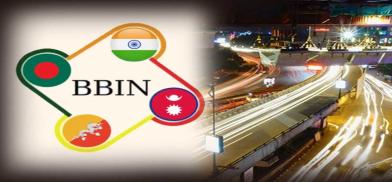How renewable energy partnership can boost Bhutanese, BBIN economy
India can also help Bhutan to realize its green goals by promoting hybrid CNG/electric powered passenger and goods transport vehicles. These vehicles may be based at an EV park at Phuntsholing. Goods received there after customs clearance can then be distributed by Bhutan's own transport systems, employing their own nationals as drivers, helpers, mechanics and loaders, writes Amb Sarvajit Chakravarti (retd) for South Asia Monitor

Expansion of renewable energy use can make Bhutan, Nepal and the wider Himalayan region the major drivers of economic growth in the BBIN sub-region as their hydel potential is still largely untapped.
Earnings from this one source, along with sustainable eco-tourism, can transform these countries into powerhouses of growth into high middle-income countries or higher within five years. India alone has an annual power deficit now of about 45,000 MW and may be willing to purchase their entire surplus output.
Additional power can be supplied to other countries of South Asia by linking their power grids to the Indian national grid, which may earn revenue from wheeling charges for facilitating the contracted supplies. India is already providing some power to Bangladesh in this manner.
New technology
While the development of large hydel projects takes time and has high environmental impacts, the application of new technologies such as floating gensets which need only to be anchored to the river banks to rise and fall in synch with the river flow. These are made and used in the Balkans. These can be transported on trucks and offloaded into selected spots on small, fast streams.
Requiring a head of less than one meter to operate, the inbuilt turbines then provide clean renewable and steady power to isolated hill communities anywhere on a run of the river basis.
Green energy will also enable optimal use of public and private infrastructure by enabling working of more shifts, which will raise efficiency, employment, output and income as well as spread basic education, provide healthcare and develop skills and expertise among the entire population.
Electric vehicles
India can also help Bhutan to realize its green goals by promoting hybrid CNG/electric powered passenger and goods transport vehicles. These vehicles may be based at an EV park at Phuntsholing. Goods received there after customs clearance can then be distributed by Bhutan's own transport systems, employing their own nationals as drivers, helpers, mechanics and loaders.
India may also help Bhutan to lay electrical, fibreoptic and telecom cables in a composite duct embedded safely at a height of six feet in the mountain wall along the highway. EV charging bays may be derived from it and built at suitable distances along the route length to allow recharging of vehicles and refreshment of passengers. A project proposal on these lines was made some years ago by the Kolkata think tank CSIRD. Bhutan can thus become free of fossil fuel transport.
This will require development of a counterpart vehicle park on the Indian side at Jaigaon where vehicles from India can discharge goods destined for Bhutan and carry out exports from that country. This may enable conclusion of the BBIN Motor Vehicles Agreement, to which Bhutan has objections. Once the agreement is in force, vehicles from Nepal and Bangladesh can also use it.
Helping Bhutan
All this will require concerted action by our private sector with government support, possibly on a PPP model, with the government of Bhutan.
Bhutan's potential for woolen textiles, horticulture processing, floriculture, medicinal and herbal plants and products, pharmaceuticals and nutraceuticals, assembly of electronics requiring a clean and cool ambience should also be exploited with our investment and support.
A comprehensive study of Bhutan's economic potential will be useful for her to maximize her growth potential.
(The author is a retired Indian ambassador. Views are personal)










Post a Comment